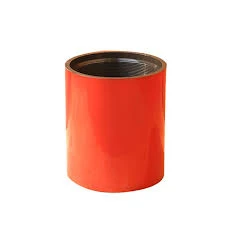- Afrikaans
- Albanian
- Amharic
- Arabic
- Armenian
- Azerbaijani
- Basque
- Belarusian
- Bengali
- Bosnian
- Bulgarian
- Catalan
- Cebuano
- Corsican
- Croatian
- Czech
- Danish
- Dutch
- English
- Esperanto
- Estonian
- Finnish
- French
- Frisian
- Galician
- Georgian
- German
- Greek
- Gujarati
- Haitian Creole
- hausa
- hawaiian
- Hebrew
- Hindi
- Miao
- Hungarian
- Icelandic
- igbo
- Indonesian
- irish
- Italian
- Japanese
- Javanese
- Kannada
- kazakh
- Khmer
- Rwandese
- Korean
- Kurdish
- Kyrgyz
- Lao
- Latin
- Latvian
- Lithuanian
- Luxembourgish
- Macedonian
- Malgashi
- Malay
- Malayalam
- Maltese
- Maori
- Marathi
- Mongolian
- Myanmar
- Nepali
- Norwegian
- Norwegian
- Occitan
- Pashto
- Persian
- Polish
- Portuguese
- Punjabi
- Romanian
- Russian
- Samoan
- Scottish Gaelic
- Serbian
- Sesotho
- Shona
- Sindhi
- Sinhala
- Slovak
- Slovenian
- Somali
- Spanish
- Sundanese
- Swahili
- Swedish
- Tagalog
- Tajik
- Tamil
- Tatar
- Telugu
- Thai
- Turkish
- Turkmen
- Ukrainian
- Urdu
- Uighur
- Uzbek
- Vietnamese
- Welsh
- Bantu
- Yiddish
- Yoruba
- Zulu
bull plug vs hex plug
Bull Plug vs. Hex Plug Understanding the Differences
When it comes to pipe fittings and connections in plumbing or industrial applications, understanding the various types of plugs available is essential. Two common types of plugs are the bull plug and the hex plug, each designed for specific functions and applications. This article will delve into the characteristics, uses, and differences between these two types of plugs.
What is a Bull Plug?
A bull plug is a solid plug typically used to seal off the end of a pipe or fitting. It is characterized by its rounded, typically conical shape, which allows for a tight seal when inserted into a pipe end. Bull plugs are often made from materials such as brass, stainless steel, or plastic, making them versatile for different environments, including water, steam, and gas applications.
One of the key advantages of a bull plug is its ease of installation. The conical shape allows for simple insertion into the pipe, and the design often accommodates a range of pipe sizes. Bull plugs are most commonly used in low-pressure applications where a permanent seal is required, such as in water supply lines or stagnant fluid systems. They are also useful in situations where a permanent plug may be needed to prevent contaminants from entering a system.
What is a Hex Plug?
In contrast, a hex plug features a hexagonal shape that allows for a wrench or socket tool to grip it securely during installation and removal. This design is especially beneficial in high-pressure applications, where a tight connection is crucial. Hex plugs can also be made from various materials, including steel, brass, and plastic, and are often utilized to seal holes in pipes or machinery.
bull plug vs hex plug

Hex plugs are particularly useful in system maintenance and modification. The ability to use tools for installation and removal means that they can be easily adjusted or replaced without requiring extensive disassembly of surrounding components. They also provide a robust connection that can handle higher pressures, making them suitable for hydraulic systems, pneumatic applications, and processes requiring significant resistance to pressure and temperature changes.
Key Differences Between Bull and Hex Plugs
The primary differences between bull plugs and hex plugs lie in their shape, installation method, and application suitability.
1. Shape and Design Bull plugs are conical and primarily designed for straightforward sealing, whereas hex plugs have a hexagonal shape that allows for tool gripping. 2. Application Bull plugs are often used in low-pressure applications that need a simple seal, while hex plugs are preferred for high-pressure systems due to their ability to be tightened with tools.
3. Removal and Maintenance Bull plugs are typically considered permanent seals that are not meant for regular removal, while hex plugs allow for easy disassembly and access to the piping system as needed.
Conclusion
In summary, while both bull plugs and hex plugs serve the vital purpose of sealing pipes and fittings, they cater to different needs within plumbing and industrial applications. Recognizing the strengths and best-use scenarios for each type can lead to better system performance, reliability, and efficiency, ultimately contributing to improved operational outcomes. When selecting between the two, consider factors such as pressure requirements, ease of access for maintenance, and the specific application to ensure that you choose the right plug for your needs.
-
Tubing Pup Joints: Essential Components for Oil and Gas OperationsNewsJul.10,2025
-
Pup Joints: Essential Components for Reliable Drilling OperationsNewsJul.10,2025
-
Pipe Couplings: Connecting Your World EfficientlyNewsJul.10,2025
-
Mastering Oilfield Operations with Quality Tubing and CasingNewsJul.10,2025
-
High-Quality Casing Couplings for Every NeedNewsJul.10,2025
-
Boost Your Drilling Efficiency with Premium Crossover Tools & Seating NipplesNewsJul.10,2025







